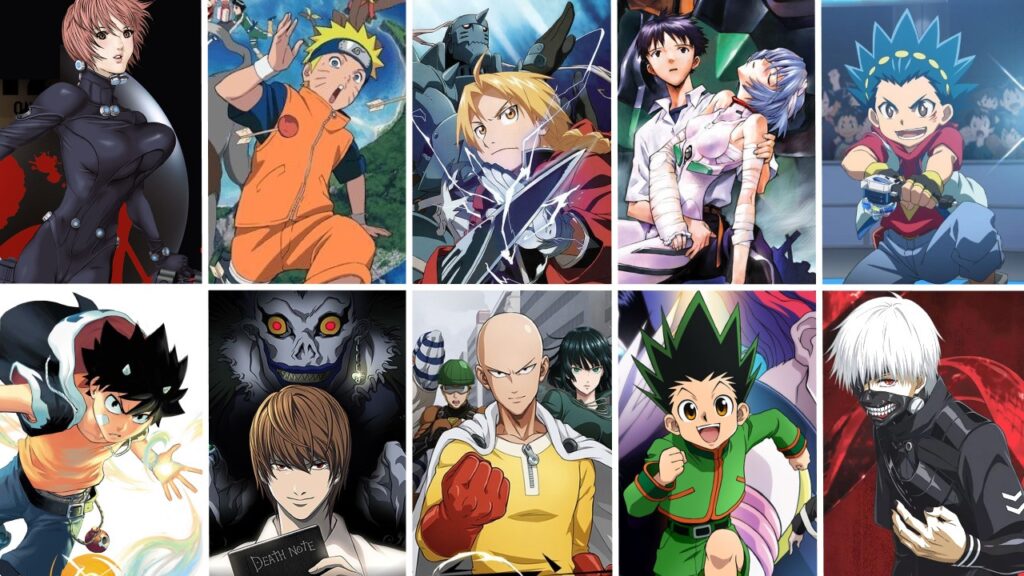black clover film è canonico
[88][89] Legacy[edit] Further information:
Akira (franchise) and Akira (1988 film) § Legacy Akira is considered a landmark work in the cyberpunk genre,
credited with spawning the Japanese cyberpunk subgenre. It actually predates the
seminal cyberpunk novel Neuromancer (1984), which was released two years after Akira began serialization in 1982 and was not translated into Japanese until 1985. [90] Akira inspired a wave of Japanese cyberpunk-infused manga and anime works, including Ghost in the Shell, Battle Angel Alita, Cowboy Bebop, and Serial Experiments Lain. [91] Tetsuo Hara cited Akira as an influence on the dystopian post-apocalyptic setting of his manga Fist of the North Star (1983 debut). [92] Manga artist Tooru Fujisawa, creator of Great Teacher Onizuka, cited Akira as one of his greatest inspirations and said it changed the way he wrote. [93] Naruto creator Masashi Kishimoto has cited
both the Akira manga and anime as major influences, particularly as the basis of his own manga career. [94] Bartkira, a fan-made web comic parody of Akira created by Ryan Humphrey, is a panel-for-panel retelling of all six volumes of the manga illustrated by numerous artists contributing several pages each, with Otomo's characters being portrayed by members of the cast of The Simpsons: for example, Kaneda is represented by Bart Simpson, Milhouse Van Houten replaces Tetsuo, and Kei and Colonel Shikishima are portrayed by Laura Powers and Principal Skinner respectively. [95] The city depicted in the first two stages of the 1992 video game Last Resort is very similar to that of Neo Tokyo from the anime film. In the 1998 video game Half-Life, aspects of the level design were influenced directly by scenes from the manga. For example, the diagonal elevator leading down to the sewer canals as well as the design of the canals themselves are taken from scenes in the manga. This was confirmed by Brett Johnson, the developer who designed the levels.
Kurapika, who also infiltrated the ship with other Hunters, takes part in the succession war as the bodyguard of Fourteenth Prince Wobble, Kakin's youngest prince and a toddler. Kurapika's personal objective, however, is to retrieve the last batch of scarlet eyes from the Kurta
Clan in custody of Tserriednich, Kakin's Fourth Prince. Production[edit] Author Yoshihiro Togashi explained that one of his hobbies was collecting objects of all sorts, so he was inspired to create a manga involving collecting titled "(something) Hunter". [17] He came up with the final name Hunter × Hunter while watching the television variety show Downtown, in which the hosts often repeat what they say to make the audience laugh. [17] The "×" in the title is silent. [4][18][19] As with his previous series, YuYu Hakusho, Togashi used drafting ink and Kabura pens for his illustrations but began using an eMac to color them. [20] Togashi uses few or no assistants in the manga's production;[21] however, fellow manga artist and future wife Naoko Takeuchi assisted Togashi in adding screentone to single-color pages for the first volume. [22][23] With the birth of their first son early in its publication, Togashi felt that this personal aspect of his life would be a great influence on his work, particularly the manga's theme of a young boy searching for his father. [20]
There have been several instances in which Togashi has apologized to readers in Shueisha's Weekly Shōnen Jump for low-quality artwork and promised to redraw portions of the chapters for their tankōbon (collected volume) releases. [24][25][26] In addition, the publication history of the Hunter × Hunter manga has been plagued with hiatuses since 2006, in which serialized chapters would be separated by extended periods of time. [27][28][29][30] After returning from a two-year-long hiatus in June 2014,[31] and joining the English-language Weekly Shonen Jump lineup, the manga went on another just two months later.
↑ "Anime &
Manga in NY, LA Times". ICV2.
July 26, 2005. Retrieved 2010-11-13. ↑ "Hunter X Hunter: Vol. 1.
